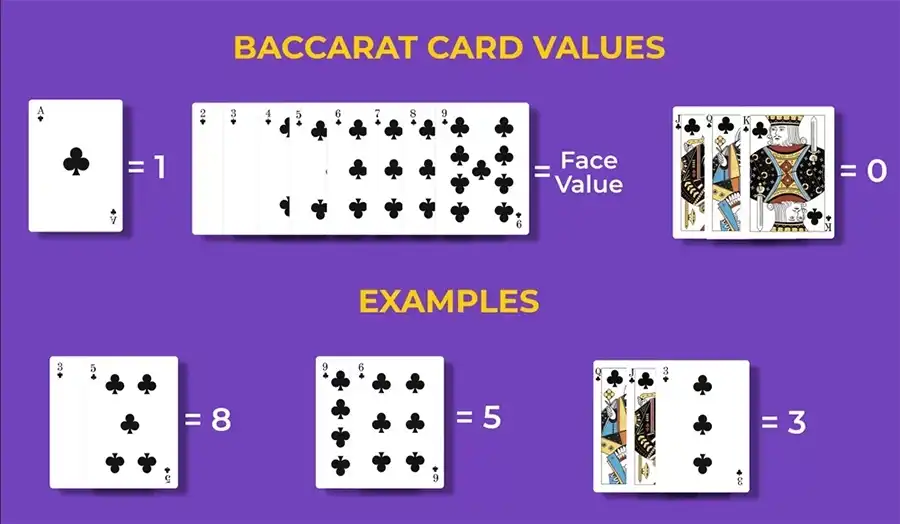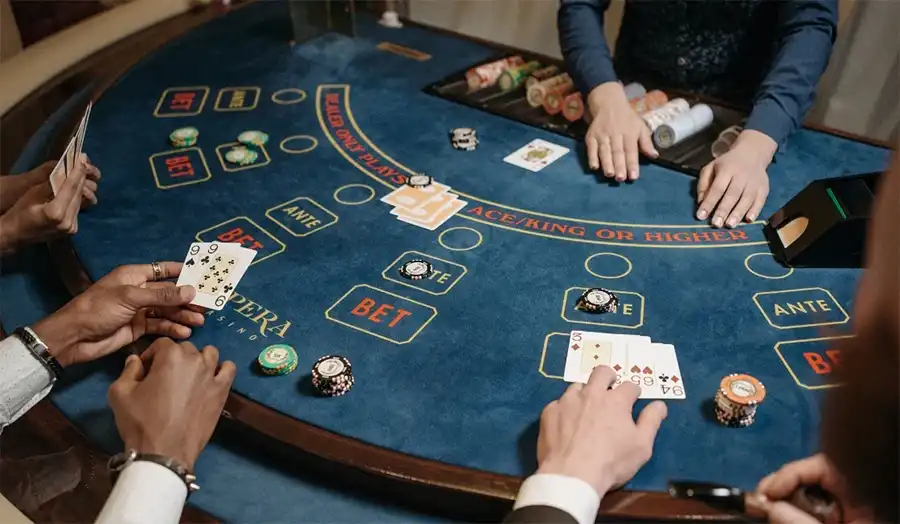Baccarat may appear simple, but understanding its rules separates casual players from those who approach the table strategically. At Wintips, we focus on breaking down key concepts such as baccarat drawing rules so players can clearly see why each card is drawn and how those decisions determine the result. Without grasping the baccarat rules of play, players are left guessing why certain hands win or lose. Learning the logic behind the drawing system allows you to anticipate outcomes, identify better betting opportunities, and avoid emotional decisions that often lead to losses. With this foundation, players gain confidence and notice the Banker’s subtle advantage in most scenarios.
How Baccarat scoring works
The scoring system is deceptively simple but crucial. Cards 2–9 retain their value, tens and face cards count as zero, and aces count as one. If a hand totals more than nine, only the rightmost digit is considered. For example, a 7 and 8 total 15, which becomes 5. Understanding this scoring method is essential because every decision to draw or stand depends on it. Players who internalize the scoring system can quickly evaluate the strength of both the Player and Banker hands and follow the flow of the round with greater clarity.

Natural wins: When the round ends instantly
A natural total of 8 or 9 ends the round immediately. No third card is drawn, and the hand with the higher total wins. Recognizing naturals is important because it signals the rare moments when probability is already heavily skewed. Experienced players use this knowledge to track trends in streaks and potential outcomes, even though each round is independent. Highlighting naturals also helps beginners differentiate between rounds that require attention to drawing rules and those that conclude immediately.
Player Action: The first decision
The Player hand always moves first, which sets the tone for the round. Hands totaling zero to five must draw a third card, while six or seven stand. Though seemingly simple, this first decision influences the Banker’s subsequent actions and shapes the dynamics of each round. Players who understand why this step occurs can follow the round with greater comprehension and see how the Banker’s edge is implemented through structured rules rather than random chance.
Understanding the Baccarat drawing rules
Once the Player hand acts, the Banker evaluates both its total and whether the Player drew a third card. The baccarat drawing rules dictate this automatic process, maintaining fairness while preserving the Banker’s statistical advantage. Grasping this system allows players to follow the game like a spectator who understands the mechanics rather than a gambler guessing blindly. The rules create subtle tension and anticipation, as a single card can decisively change the round’s outcome.

The third card rule in Baccarat
The third card rule in baccarat is often the most confusing for beginners. The Banker’s decision to draw depends not only on its own total but also on the Player’s third card. Learning this rule is key to understanding the game’s dynamics. Once players can anticipate when the Banker will draw, the game becomes less about luck and more about observing probability in action. The structure is elegant: automatic yet precise, ensuring consistent outcomes across every casino table.
Real example: How the rule plays out
Imagine a scenario where the Player draws a third card after totaling five, resulting in a seven. The Banker holds four. The Banker must draw according to the rules. Understanding these interactions in practice shows how a single third card influences the Banker’s move, creating suspense and demonstrating the structured logic behind baccarat. By following these examples, players can train their observation skills and recognize recurring patterns without breaking the rules.
Why these rules favor the Banker
The Banker’s advantage stems from the ability to act with information: it responds to both its total and the Player’s actions. This structured approach slightly increases its long-term winning percentage, which is why casinos charge a commission on Banker bets. Players who understand the rationale behind this advantage can align their betting strategy accordingly, focusing on probability rather than superstition.
Where players go wrong
New players often assume baccarat is pure luck. They ignore the drawing rules, chase streaks, and react emotionally to the table. Recognizing these common mistakes highlights the importance of understanding the mechanics. Observing rather than reacting and trusting the structured flow of the game allows players to reduce unnecessary losses and make more calculated decisions.
Playing Baccarat with intention
Playing baccarat with intention is about respect for the game’s rules. Each draw exists for a reason, and understanding the baccarat drawing rules allows players to anticipate outcomes instead of reacting blindly. Patience, observation, and strategic awareness create a more disciplined approach, separating casual gamblers from players who can leverage the structure to their advantage.

Final notes
Every draw in baccarat is purposeful. From the Player’s initial move to the Banker’s final decision, the system is designed to maintain fairness while providing subtle statistical advantages. Knowledge of these rules transforms the game from pure chance into an exercise in observation and probability. Mastering the structure allows players to approach baccarat with confidence, understanding why each card matters and how each round unfolds logically.
Continue reading: Baccarat card game: Rules, how to play, and complete beginner’s guide







